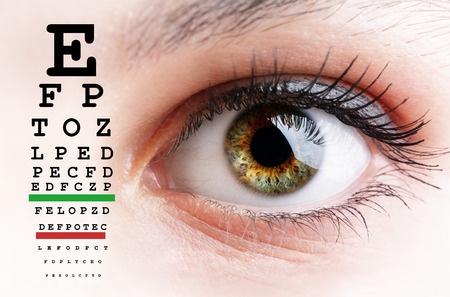
5 Symptoms You Should Never Ignore when It Comes to Your Eyes
Posted: June 5, 2016
Recently, I was watching a segment on the Today Show, entitled Seeing is Believing. They shared that keeping your eyes in tip top shape has never been more important! Most of us take our perfect eyesight, some with the help of glasses or contacts, for granted and only see an eye doctor every couple of years or so. And truth be told, most of us skip it all together. According to the Centers for Disease Control and Prevention, about half of the estimated 61 million adults in the US who are at high risk for serious vision loss haven’t seen an eye doctor in the last year. About 35% of adults don’t see an eye doctor because they really do think their vision is okay and an exam just isn’t necessary. Eye exams not only examine your vision, but they are good indicators of your overall health. Many people have other ailments but don’t really find out about them until they get their eyes examined. For example, high blood pressure, high cholesterol or auto-immune diseases. “The eyes may be the windows to the soul, but they can also tell us about a lot of systemic diseases, and the severity of those diseases,” explains Dr. Suber Huang, chief executive of Retina Center of Ohio in Cleveland and chair of the National Institutes of Health National Eye Health Education Program Steering Committee.
Some symptoms we should never ignore:
- Flashes and floaters. Most people have experienced floaters, cobwebby squiggles that appear in your field of vision, a new onset of floaters which may be followed by flashes of light signals a quick trip to an eye doctor. You might be experiencing something called posterior vitreous detachment (PVD). Or you might have a retinal tear which could lead to retinal detachment which can be blinding if not fixed quickly. A PVD is a process of aging in which the vitreous begins to shrink and pull away from the retina. It doesn’t hurt and most people don’t even realize it’s happened but can be annoying. Although about 10% of people experience a retinal tear which needs to be taken care as quickly as possible and can usually be fixed in the doctor’s office with a laser.
- Red and teary eye. If you experience this you may have keratitis which is an infection of the cornea that causes redness, pain, inflammation and many other issues. Dr. Randy J. Epstein, professor of medicine at Rush University Medical Center in Chicago, says he sees this every day, people happily wearing contact lenses and their eyes get really irritated and by the time they come see me, they have really bad infections. So if you’re having teary, painful, light-sensitive and irritated eyes and you wear contacts, get in to see your doctor ASAP. Most importantly, don’t EVER sleep in your contacts. It will make you more prone to eye infections or scar the cornea.
- Double vision. People can experience double vision in one eye or both and either way, it’s never a good thing. If you have double vision in one eye, it can be due to a corneal problem. If you have double vision in both eyes, which is more common, it means your eyes aren’t working together correctly. This could be due to a neurological issue, an autoimmune problem or other potentially serious issues. Dr. Rebecca Taylor, spokeswoman for the American Academy of Ophthalmology states if you have pain, weakness, slurred speech along with double vision, go to the ER.
- Your pupils don’t look the same size. Anisocoria is the technical name for unequal pupil size. If you’re and adult and one of your pupils becomes larger or smaller and you haven’t used eye drops, call your doctor. This can be a sign of a serious problem. According to Dr. Rebecca Taylor, it could be an aneurysm, a tumor, brain infection, sign of a stroke or it could be nothing. But the point is, get in and get checked.
- Eye pain. Your eyes should never “hurt” so if you experience pain, see your doctor. Although the pain may be obvious due to an injury but there could be other issues such as optic neuropathy or angle-closure glaucoma which can cause blindness.

